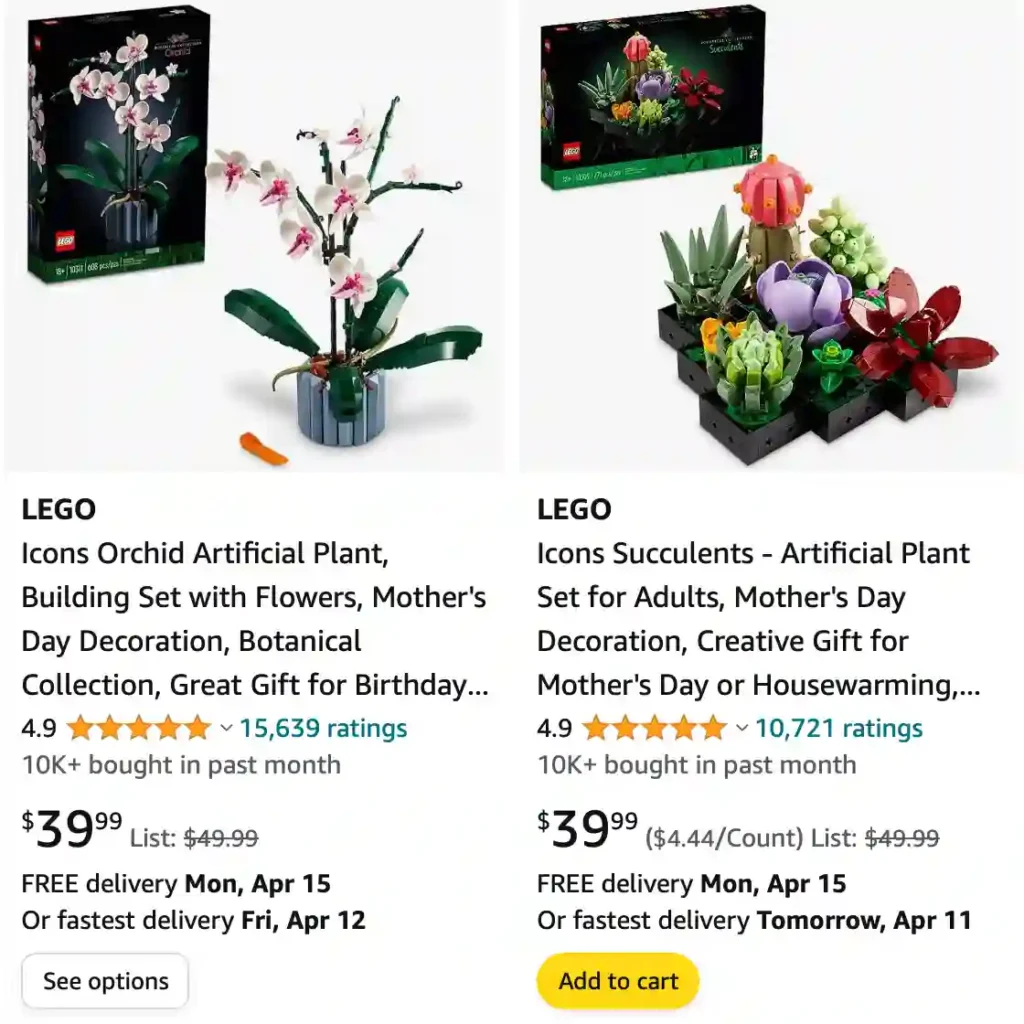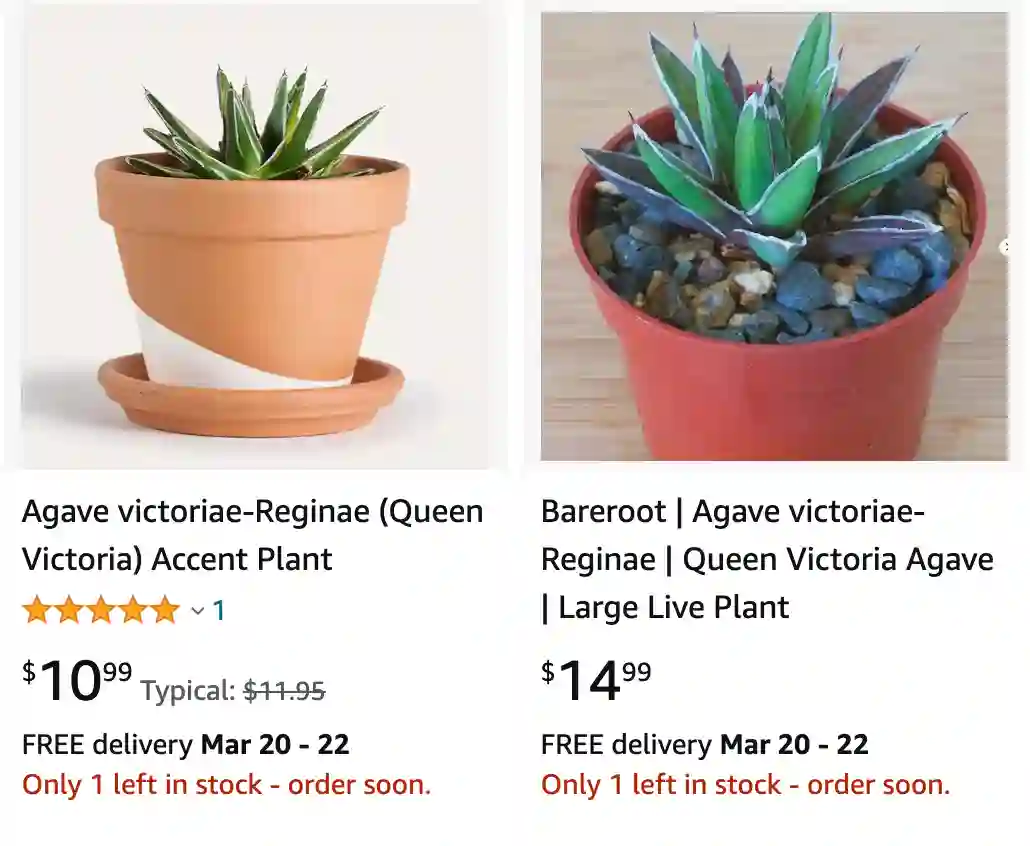
As an Amazon Associate, I earn commission from qualifying purchases. Thank you!
Introduction
As I step into my garden, a sense of pride and joy overwhelms me as my eyes fall upon the magnificent Queen Victoria Agave, an exceptional succulent that has become the crown jewel of my collection. In this narrative, I will take you through my personal experiences and discoveries with this remarkable plant, sharing insights that go beyond the factual information available. Join me on this botanical adventure as I delve into the world of Agave victoriae-reginae.

Encountering Royalty in Greenery
From the very first moment, the Queen Victoria Agave captivated me with its distinctive features. Standing at a mere half a meter, its rosettes are a masterpiece of nature—small, compact, and adorned with sculpted leaves. My fingertips have often grazed the rigid, thick leaves that proudly display a vibrant green hue, accentuated by streaks of pure white. It’s as if an artist meticulously hand-painted each leaf, giving the agave a unique, polyhedral appearance.
Queen Victoria Agave Flowers and Form
One of the most enchanting chapters of my journey with the Queen Victoria Agave is the rare occasion when it decides to bloom. After patiently tending to this succulent for over a decade, I witnessed a spectacular moment as a magnificent flowering spike shot up, reaching an impressive 15 feet. The creamy-white flowers clustered along the racemes created a visual symphony, a breathtaking contrast to the dark green leaves.
According to my actual experience, mature plants, aged over a decade, flower only once. This fleeting yet mesmerizing display adds an element of rarity to the Queen Victoria Agave, making it a truly special presence in my garden. However, the bittersweet reality is that the flowering rosette dies after this majestic event, emphasizing the ephemeral nature of its beauty.
Cultivating Royalty: A Horticultural Triumph
Venturing into the realm of horticulture, I discovered that the Queen Victoria Agave is not just a visually stunning plant but also a resilient one. With a cold-hardiness that defies its succulent nature, it has found a home in gardens across northern regions, including mine. However, my gardening adventures in the UK introduced me to the importance of sheltering this regal succulent under glass during winter—an extra layer of care that ensures its well-being.
The Royal Horticultural Society’s Award of Garden Merit adorns this agave, and rightfully so. My hands-on experiences have taught me that it thrives when planted in porous, sandy soil, basking in the glory of direct sunlight or bright shade. I’ve witnessed the importance of allowing the soil to dry out between waterings, a rhythm that sustains its vitality. Repotting every two to three years becomes a rhythmic dance, ensuring the Queen Victoria Agave graces my garden with its presence for years to come.
Into the Heart of Cultivation: From Seed to Offsets
As I explored the cultivation nuances of this regal succulent, I uncovered the slow-paced journey from seed to mature plant. Propagation, primarily through seeds, reflects the plant’s reluctance to produce basal shoots. It’s a lesson in patience and a testament to the intricate dance of nature.
According to my hands-on experience, the Queen Victoria Agave reproduces through offsets that develop basally in spring. Removing these offsets and planting them in moist soil initiates a delicate process that demands attention. Light, occasional misting, and a watchful eye as seedlings emerge become integral elements in ensuring the continuity of this botanical legacy in my garden.
Surviving the Elements: Cultivation Notes and Beyond
My Queen Victoria Agave has weathered the seasons with resilience, offering lessons in adaptation and survival. From ensuring well-draining soil to navigating the delicate balance of watering, my gardening journey has been a continuous dialogue with nature. Witnessing its tolerance to light frost, yet understanding the necessity of shelter during harsh winters, has added layers to my understanding of this remarkable succulent.
The Queen Victoria Agave, with its origins in the Chihuahuan Desert, has found a second home in my garden. Its ability to thrive in dry to medium moisture, well-drained soils, and its resilience in the face of drought have made it an icon in my garden landscape.
Ethnobotanical Reverie: A Plant Beyond Beauty
Beyond its ornamental allure, the Queen Victoria Agave has a rich history intertwined with the lives of indigenous populations. Delving into the world of ethnobotany, I discovered that this regal succulent has served diverse purposes—from fiber and food to the production of an alcoholic beverage within its native habitat. The agave’s versatile uses, including clothing and ropes, showcase its significance beyond its visual appeal.
As I marveled at the striking beauty of my Queen Victoria Agave, I couldn’t help but appreciate its broader cultural importance. The extraction of sugar-rich liquid and its transformation into honey-water or pulque add layers to its narrative, making it a plant that weaves itself into the fabric of human traditions.
Aesthetic Elegance: Landscaping with Royalty
In my personal landscaping endeavors, the Queen Victoria Agave stands out as a symbol of aesthetic elegance. Named after Queen Victoria in England, this rare succulent effortlessly blends into various garden settings. Its small, symmetrical rosette, characterized by dark green foliage with white markings, adds a touch of regality to sunny borders, rock gardens, and decorative containers.
My advice, based on my experience, is to use this versatile plant wisely. Whether in containers, raised planters, or as a small accent in rock gardens, its unique simplicity shines through. However, a word of caution: avoid planting it too close to larger shrubs that might overshadow its beauty.
Maintaining Majesty: A Gardener’s Responsibility
Maintaining the Queen Victoria Agave requires a delicate balance of care and restraint. With hardiness down to twelve degrees Fahrenheit, it thrives in full sun and reflected heat, showcasing its resilience in diverse climates. My personal touch involves monthly irrigation and well-draining soil, enhancing its tight form when watered sparingly. However, I’ve learned to refrain from watering during winter, allowing the plant to embrace its natural rhythm.
Closing Thoughts: A Botanical Companion
In conclusion, my journey with the Queen Victoria Agave has been a tapestry woven with experiences, observations, and a deep appreciation for the wonders of nature. From the intricate details of its polyhedral leaves to the fleeting beauty of its flowering spike, every moment with this succulent has been a lesson in patience, resilience, and the delicate dance between man and nature.
As I continue to nurture and celebrate the presence of the Queen Victoria Agave in my garden, I find solace in the fact that I am not merely a gardener but a custodian of a botanical companion that has graced my life with its regal charm. This succulent, with its royal lineage and timeless elegance, stands testament to the enduring beauty that nature unfolds for those willing to embark on the journey of discovery.



